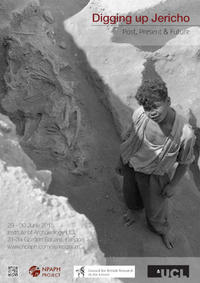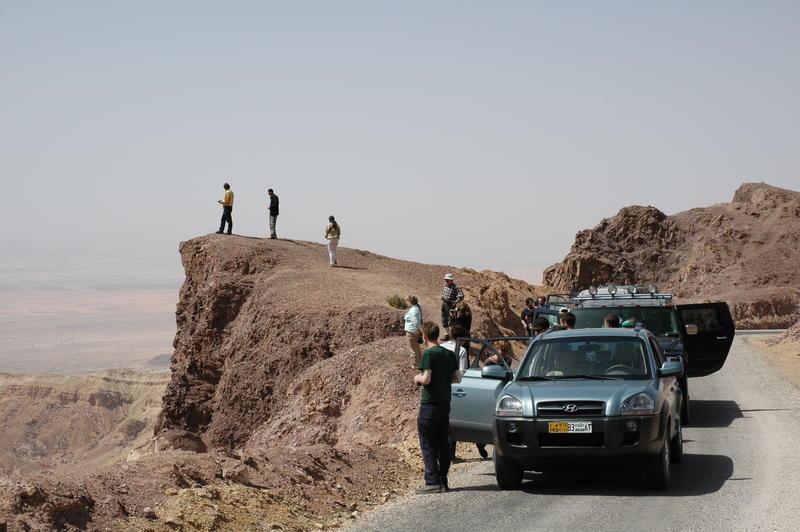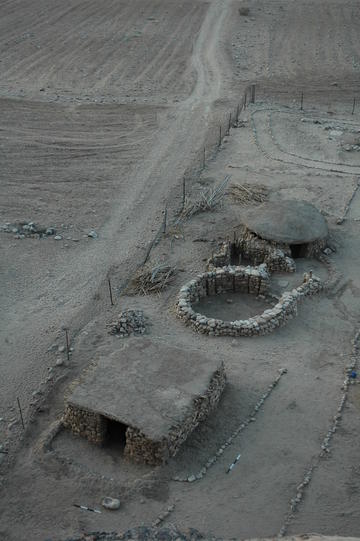Symposiums, Stories & the EAMENA Project
Posted 6/7/2015
Jennie Bradbury tells of Symposiums, Stories & the EAMENA Project

On behalf of the EAMENA project, I recently attended a symposium at UCL on the site of Jericho (Digging up Jericho: Past, Present & Future, 29th – 30th June 2015, http://npaph.com/symposium/). Research at this site has been carried out since the late 19th century, under the auspices of the Palestine Exploration Fund from the 1860s-70s and then later by individuals such as Ernst Sellin and Carl Watzinger, John Garstang and possibly most famously Kathleen Kenyon in the mid-20th century. More recently excavations at the site have been carried out by a joint Italian-Palestinian team.
Amongst the many interesting papers on the archaeology, the individuals who have worked at Jericho and the techniques and methodologies used at this famous site, there were also plenty of papers considering the importance of tourism and heritage management within the region. A paper given by Bill Finlayson (CBRL) discussed the Neolithic Heritage Trail that has been recently set up in Southern Jordan and is designed to allow visitors to walk between and visit a number of famous archaeological sites and landscapes, such as Wadi Faynan and Beidha. Working with local communities and with the goal of preserving and building sustainable tourism and heritage activities within the region, the project aims to present the Neolithic heritage of this area in a way that engages the interest of the general public, both local and international.

Along the Neolithic Heritage Trail, views down to the Wadi Araba. Image courtesy of Bill Finlayson
Jack Green (Oriental Institute, University of Chicago) talked about a new site museum that has been recently set up at the site of Khirbet el-Mafjar (Hisham’s Palace), an Islamic site located near to the ancient mound of Jericho (Tell es-Sultan). This joint project (http://www.jerichomafjarproject.org/site-museum) between the Palestinian Department of Antiquities and Oriental Institute allowed artefacts from earlier excavations to be displayed, alongside recent discoveries, with newly designed information panels presenting information to visitors about the site and the region’s rich history. The project also involved local businesses, providing important opportunities for future sustainable tourism and education.

Reconstructions at Neolithic Beidha. Photograph taken by Pascal Flohr. Image courtesy of Bill Finlayson

Hishams Palace Museum, South Gallery (June 2015). Image courtesy of Jack Green
As part of our project we are documenting archaeological remains which vary from single cairns or artefact scatters to huge well known heritage sites. As Nichole wrote about a few weeks ago, this obviously creates huge challenges for building a glossary of workable definitions and methodologies. Of course, one of the things or stories that many of these sites or landscapes share are that they are endangered, in part due to the present conflicts across the region. This is one aspect that the international media is currently very much focused on, whether in regards to the destruction of archaeological sites by extremist groups in the Middle East and North Africa, or the looting of archaeological sites. This, however, is only one part of the story and the work that EAMENA is doing. Sites across the region, as in other parts of the world, including the UK, have been effected, destroyed and threatened for decades by modern agriculture, urbanization and industrial development. For example, work by Durham University in the Homs region of Syria (Homs Regional Survey Project) estimated that around 60% of sites in the basalt uplands north-west of modern Homs had been damaged or effected by agriculture, building activities and modern industry by 2010. Another very important part of the story is how the development of new technologies, the re-invigoration of older techniques and the use of legacy data can bring vital new ideas, approaches and opportunities to the discipline. Without the development of satellite imagery and the use aerial photographs, which we will write about in future blogs, many of the goals of EAMENA could not be achieved. Finally, perhaps one of the most important aspects of the EAMENA project, which was a story that also emerged from the Jericho symposium, is the importance of co-operation. The EAMENA team comes from a range of different backgrounds and team members have many interests; the project is all the better for this. In addition, we are not working in isolation, but importantly are in contact with other universities, institutions and individuals across the Middle East, North Africa, the UK, USA and Europe. Ultimately this is perhaps one of the best stories that the EAMENA project can tell, how by working together with various different groups and individuals, we can not only learn more about the archaeology of these regions, but hopefully also ensure the protection of this knowledge for the future.



